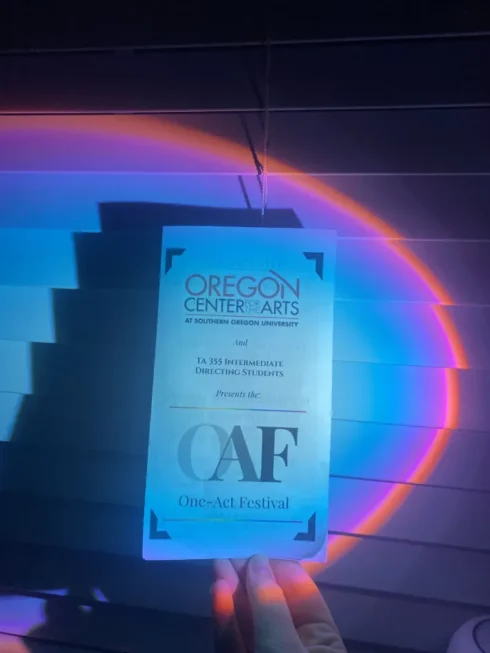Image Credit Nintendo
Have you ever experienced some media, whether it be a film, a show, or a game, and just thought to yourself, “dang, that was a masterpiece?” For example, back in the fall of 2020, I played through this little game called “13 Sentinels”, developed by Vanhillaware and published by Atlus. I remember first hearing about “13 Sentinels” when the game debuted at Playstation’s 2015 Tokyo Game Show conference. I thought the game had a beautiful-looking art style.
After a troubled development cycle, “13 Sentinels: Aegis Rim” was released exclusively on the PS4 in Japan on November 28th, 2019. Then on September 22nd, 2020, it was released in America and Europe. Then finally, on April 12th, 2022, a port of the game was released on the Nintendo Switch; I hope I can persuade some gamers to get on board with “13 Sentinels.”
“13 Sentinels” is a weird mix of genres in both gameplay and storytelling. With its gameplay, it’s part visual novel and adventure game, and in other parts, it’s this weird mix of real-time strategy and tower defense. At the same time, the story takes a ton of inspiration from Japanese media such as Gundam, Evangelion, Godzilla, and American movies like E.T, The Terminator, and The Matrix. This unique blend of storytelling is all told in a non-linear fashion. Through 13 different perspectives, you often swap back and forth throughout the story, building towards this epic sci-fi story with insane twists and turns that can only happen with video games. If what I said has sold you on this game, please do not read the rest of this review; go out and buy this game and go as blind as possible. Trust me, this is one of those media pieces where it’s better the less you know before the journey begins. However, if you need more convincing, read on.
“13 Sentinels” tells the story of 13 Japanese teenagers who each pilot a giant mech known as the Sentinels to save their city from giant monsters known as Kaiju, which seek to destroy it. The story splits into two modes, Destruction and Remembrance. In Destruction, the gameplay of this mode is a mix of real-time strategy and tower defense. At the start of battles, you pick up six characters and take them into battle. They need to protect the Aegis and the city. It is game over if the health of the Aegis or the city falls to zero. Likewise, the demise of if any pilots. Victory is achieved by eliminating all Kaiju during that battle or holding out long enough for time to run out for the Aegis to activate. Each character falls into a different class of sentinel throughout the generations. Gen one Sentinels saunter and lack range attacks, while gen four Sentinels can fly but only have range attacks and have the weakest armor. You need to think carefully about which pilots to bring into battle. If a pilot is carried into battle too many times in a row, they will eventually need to set a battle out, and you will need to complete at least one match before being able to use them again. In between battles, you can upgrade each of the pilots through points you earn during battles and completing character chapters in the remembrance mode. In terms of difficulty, I played the game normally on my first playthrough on PS4. Outside of a couple of battles towards the end of the game, I did not find it too hard. While I have not finished the game on the Switch and am only about a quarter of the way through the game, I am playing on a harder mode. With some of the balance changes brought to the Switch, which made things a little more complicated, I have noticed that I have more close calls than I did on PS4, but I would still say the game overall is on the easy side.

Then you have the Remembrance mode, the real heart and soul of “13 Sentinels.” In Remembrance, you play through each of the 13 characters’ stories, showing the lead to them coming together and facing the Kaiju. An element to the story is time travel, and while you will spend most of the story in the year 1985, you will be traveling between several points in time, as early as 1945, right near the end of the second world war, and always to the 22nd century.
The kinds of stories told by each of the characters range greatly. For example, you have Juro Kurabe, the closest the game has to the main protagonist. His story focuses mainly on him hanging out with his best friends while they share their love for Kaiju movies, but he has weird dreams that almost feel like memories. You have Megumi’s story, whose boyfriend Juro Izumi has lost all memories of her after getting injured in a battle, and she ends up making a deal with a talking cat to complete a task to restore his memories. There is Sekigahara’s story, who wakes up in an alley with no memories, a gun in his hand, and a dead body of a school nurse beside him. The focus of his story is to gain back his memories, all while running from a black-wearing mob. You also have Miura, a teenage soldier from World War 2, who gets sent 40 years into the future and only discovers his country lost the war and can’t find any trace of his little sister. There is also Natsuno’s story, which has her befriending an alien robot trying to find Sentinel number 7. This storyline gets inspiration from the movie E.T. These are only the setup for some of the game’s 13 characters and individual stories. Often, these characters will cross and interlink. For example, the last two, Miura and Natsuno, will usually appear in each other’s and serve as each other’s love interests. At the same time, Natsuno’s best friend Yuki has her own story, and so does Miura’s best friend, Hijiyama. You will also get plenty of excellent character interaction in the destruction mode.


While at the start of the game, its story is linear. Once you clear the prologue, you have more freedom regarding how you experience the story. As you choose to experience, not only are the characters in any order, but you can also switch between characters in one of their several chapters. All in all, you will need to finish both Remembrance and Destruction to finish the game and see the ending.
The art style of the game is gorgeous. It is a 2D art style, and the developer hand-drew all the characters and backgrounds. There isn’t a similar art style I have seen done in any game outside of Vanilla’s other works like “Dragon’s Crown” and “Muramasa the Demon Blade.” The animations are very expressive, and they reveal small details in each character and the game’s environment. The soundtrack for this game is also fantastic; there is a lot of variety in the tracks, from intense battle themes to more subdued themes that fit the characters’ daily lives. My favorite track is “Seaside Vacation,” a track that plays during a particular battle towards the end of the game and the game’s ending. As for voice acting, it provides both the original Japanese audio and an English dub. I did my initial playthrough on PS4 with the Japanese audio and currently replaying the game on Switch but using the English dub. I am pleased to say that regardless of your preference, both the cast for the English and Japanese dubs do a fantastic job as their respective characters.
In short, “13 Sentinels” is an incredible experience that is worth playing. The combat, while the easy, is a lot of fun if you are a fan of strategy games like me, and the game has an easy mode, so if you feel overwhelmed and want to experience the story, that’s the mode for you. The story is incredible and kept me constantly guessing about what would happen next and wrapped up with an incredibly satisfying that tied everything together so well in a way that may have seemed impossible at first. Now I usually don’t give scores, but if I had to give “13 Sentinels: anything, it would be a 10 out of 10. The game is up there with “Red Dead Redemption 2,” “Nier Automata,” and “Persona 5” for the best PS4 game, and up there with “Xenoblade 2,” “Fire Emblem Three Houses,” and “The Legend of Zelda: Breath of the Wild” for the best game on Nintendo Switch. It’s worth owning on either platform.



